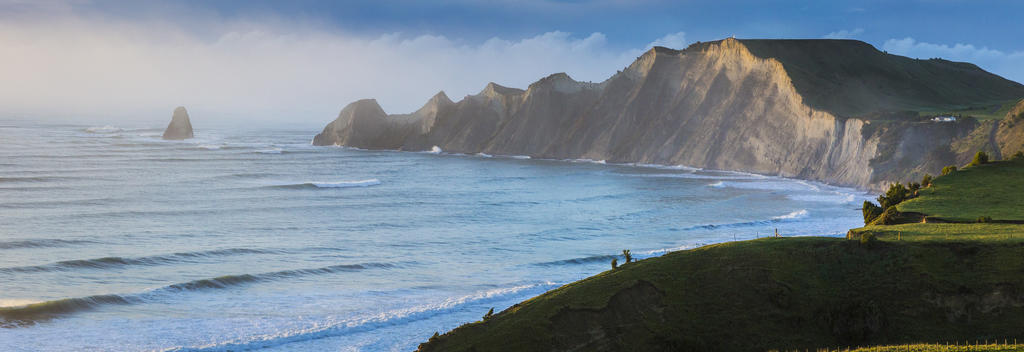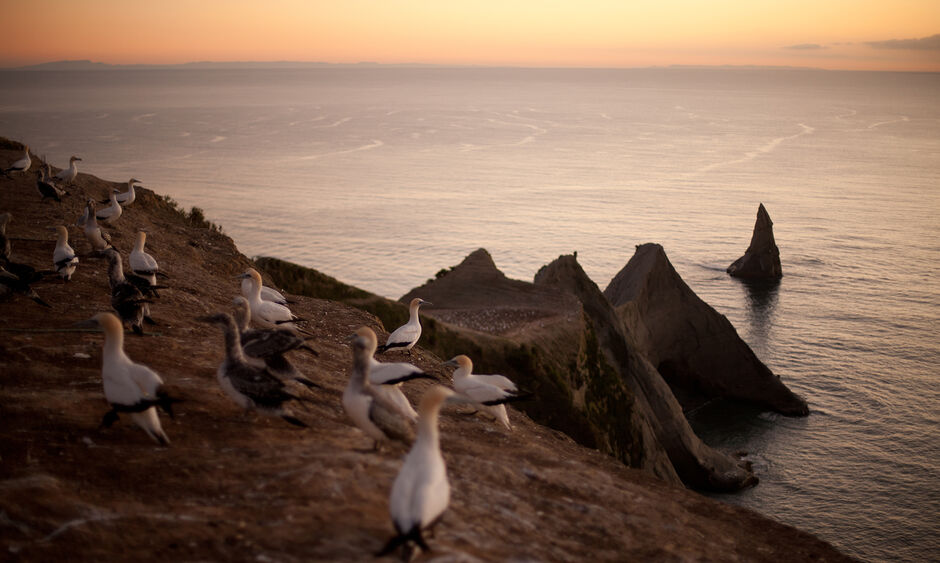-
Popular places to visit
Popular things to do
Helpful tips
Here's a few useful links to help with planning your trip to Aotearoa New Zealand.
-


This track is along a beach and is subject to landslides and rockfall. It can only be attempted at low tide.


At low tide, follow the beach all the way to the Cape to see the gannet colony up close.
Along the way you will pass dramatic stratified rock beds and fault lines that underlie coastal Hawke’s Bay. The towering cliffs are made up of sandstone, conglomerate, mudstone, river gravel, pumice and silt, as well as glimpses of petrified wood and lignite. Fossilised shells can be seen in the sandstone near Black Reef.
Black Reef, the first nesting site, is located on large sandstone rocks at the inshore end of the reef. Just beyond Black Reef, the track leaves the beach and continues up to a shelter with picnic tables, water and toilets, where you can take a break.
For more gannets walk down to the Plateau colony, a benched area on the hill with spectacular views across the Hawke's Bay region.

Track conditions often change. Be prepared by checking with the Department of Conservation before you go.
Need to know
The walk to Cape Kidnappers/Te Kauwae-a-Māui is only accessible at low tide.
Occasionally, high tides and big seas block access along the beach. Rest or picnic away from the cliffs as slips can occur.
Looking for deals